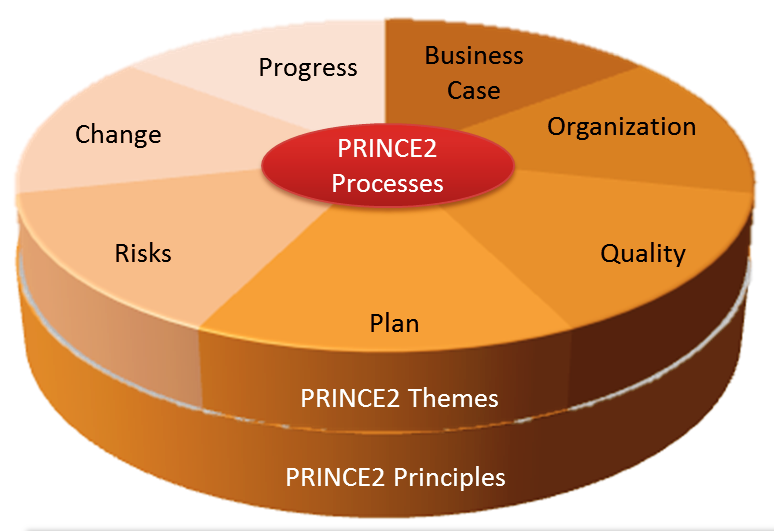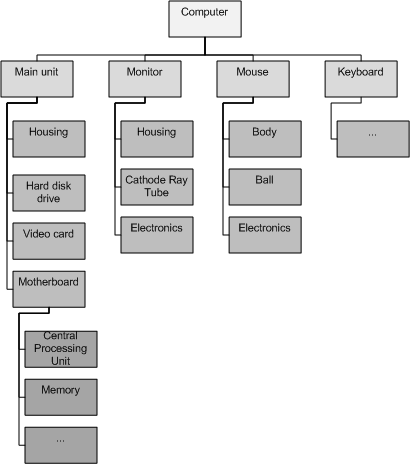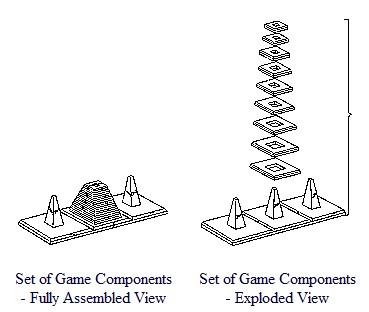|
Product-based Planning
Product-based planning is a fundamental part of the PRINCE2 approach to project management, and is a method of identifying all of the products (project deliverables) that make up or contribute to delivering the objectives of the project, and the associated work required to deliver them. The documents which define the Project itself are also considered Products. Overview ;Product breakdown structure : Product-based planning is intended to ensure that all of the necessary products are identified and captured, and begins by identifying a product breakdown structure which is then repeatedly refined until all of the requisite products are identified. The PBS is thus a hierarchical family tree of all the products and sub-products that comprise the final end-product. : It is important to understand that in this context the term 'product' includes intermediate documentary products that are essential to the work of delivering the project. In this sense the product breakdown structure is ... [...More Info...] [...Related Items...] OR: [Wikipedia] [Google] [Baidu] |
PRINCE2
PRINCE2 (PRojects IN Controlled Environments) is a structured project management method and practitioner certification programme. PRINCE2 emphasises dividing projects into manageable and controllable stages. It is adopted in many countries worldwide, including the UK, Western European countries, and Australia. PRINCE2 training is available in many languages. PRINCE2 was developed as a UK government standard for information systems projects. In July 2013, ownership of the rights to PRINCE2 were transferred from HM Cabinet Office to AXELOS Ltd, a joint venture by the Cabinet Office and Capita, with 49% and 51% stakes respectively. History PRINCE was derived from an earlier method called PROMPT II (Project Resource Organisation Management Planning Techniques). In 1989 the Central Computer and Telecommunications Agency (CCTA) adopted a version of PROMPT II as a UK Government standard for information systems (IT) project management. They gave it the name 'PRINCE', which originally ... [...More Info...] [...Related Items...] OR: [Wikipedia] [Google] [Baidu] |
Project Management
Project management is the process of leading the work of a team to achieve all project goals within the given constraints. This information is usually described in project documentation, created at the beginning of the development process. The primary constraints are scope, time, and budget. The secondary challenge is to optimize the allocation of necessary inputs and apply them to meet pre-defined objectives. The objective of project management is to produce a complete project which complies with the client's objectives. In many cases, the objective of project management is also to shape or reform the client's brief to feasibly address the client's objectives. Once the client's objectives are clearly established, they should influence all decisions made by other people involved in the project – for example, project managers, designers, contractors, and subcontractors. Ill-defined or too tightly prescribed project management objectives are detrimental to decision-m ... [...More Info...] [...Related Items...] OR: [Wikipedia] [Google] [Baidu] |
Product Breakdown Structure
{{more citations needed, date=January 2021 In project management under the PRINCE2 methodology, a product breakdown structure (PBS) is a tool for analysing, documenting and communicating the outcomes of a project, and forms part of the product based planning technique. The PBS provides "an exhaustive, hierarchical tree structure of deliverables that make up the project, arranged in whole-part relationship" (Haughey, 2015).Duncan Haughey. (2015) ‘Project Management Tools’, Project Smart. Available from: https://www.projectsmart.co.uk/project-management-tools.php This diagrammatic representation of project outputs provides a clear and unambiguous statement of what the project is to deliver. The PBS is identical in format to the work breakdown structure (WBS), but is a separate entity and is used at a different step in the planning process. The PBS precedes the WBS and focuses on cataloguing all the desired outputs (products) needed to achieve the goal of the project. This fee ... [...More Info...] [...Related Items...] OR: [Wikipedia] [Google] [Baidu] |
Hierarchical
A hierarchy (from Greek: , from , 'president of sacred rites') is an arrangement of items (objects, names, values, categories, etc.) that are represented as being "above", "below", or "at the same level as" one another. Hierarchy is an important concept in a wide variety of fields, such as architecture, philosophy, design, mathematics, computer science, organizational theory, systems theory, systematic biology, and the social sciences (especially political philosophy). A hierarchy can link entities either directly or indirectly, and either vertically or diagonally. The only direct links in a hierarchy, insofar as they are hierarchical, are to one's immediate superior or to one of one's subordinates, although a system that is largely hierarchical can also incorporate alternative hierarchies. Hierarchical links can extend "vertically" upwards or downwards via multiple links in the same direction, following a path. All parts of the hierarchy that are not linked vertically to one ... [...More Info...] [...Related Items...] OR: [Wikipedia] [Google] [Baidu] |
Exploded View
An exploded-view drawing is a diagram, picture, schematic or technical drawing of an object, that shows the relationship or order of assembly of various parts. It shows the components of an object slightly separated by distance, or suspended in surrounding space in the case of a three-dimensional exploded diagram. An object is represented as if there had been a small controlled explosion emanating from the middle of the object, causing the object's parts to be separated an equal distance away from their original locations. The exploded-view drawing is used in parts catalogs, assembly and maintenance manuals and other instructional material. The projection of an exploded view is usually shown from above and slightly in diagonal from the left or right side of the drawing. (See exploded-view drawing of a gear pump to the right: it is slightly from above and shown from the left side of the drawing in diagonal.) Overview An exploded-view drawing is a type of drawing, that sho ... [...More Info...] [...Related Items...] OR: [Wikipedia] [Google] [Baidu] |
Product Flow Diagram
The product flow diagram (PFD) is a representation of the order by which a sequence of products is created according to product-based planning principles. It is related to the product breakdown structure (PBS). The product flow diagram is a prescribed activity of the PRINCE2 project management methodology which mandates the use of product-based planning. Features Some important features of the product flow diagram (PFD) include: * The PFD is a planning aid, not an outcome of planning (like a PERT chart which looks similar), this is a common cause of confusion among the project managers * The PFD should contain all of the products of the product breakdown structure (equivalent to a work breakdown structure) * The PFD should be kept as simple and high-level as possible for it to make sense (if additional detail is required, creating a supplementary, detailed product flow diagram can be useful) * All products should be 'linked into' the product flow diagram, even if it's only to ... [...More Info...] [...Related Items...] OR: [Wikipedia] [Google] [Baidu] |
PERT
Pert or PERT may refer to: Ships * - see List of United States Navy ships: P * , a World War II corvette, originally HMS ''Nepeta'' * ''Pert'' (sidewheeler), a 19th-century steamboat that operated in British Columbia, Canada Statistics * PERT distribution People * Pert (surname) * Pert Kelton (1907–1968), American actress PERT * Program evaluation and review technique, or PERT Chart, a planning method * Postsecondary Education Readiness Test The Postsecondary Education Readiness Test (PERT) is a computer adaptive test which measures a student's level of preparedness for college-level courses. The test is currently being used by all Florida high schools and the 28 members of the Flori ..., a placement test used by Florida high schools and colleges Other uses * Pert Plus, a brand of shampoo marketed in Australia and New Zealand as Pert * P e ^ , an expression to calculate the expected return from a continuously compounded investment given the principal, rate, and tim ... [...More Info...] [...Related Items...] OR: [Wikipedia] [Google] [Baidu] |
Refrigerator
A refrigerator, colloquially fridge, is a commercial and home appliance consisting of a thermally insulated compartment and a heat pump (mechanical, electronic or chemical) that transfers heat from its inside to its external environment so that its inside is cooled to a temperature below the room temperature. Refrigeration is an essential food storage technique around the world. The lower temperature lowers the reproduction rate of bacteria, so the refrigerator reduces the rate of spoilage. A refrigerator maintains a temperature a few degrees above the freezing point of water. The optimal temperature range for perishable food storage is .Keep your fridge-freezer clean and ice-free ''BBC''. 30 April 2008 A similar device that maintains a temperature below the freezing point of water is called a freezer. The refrigerator replaced the icebox, which had been a common household appliance for almost a century and a half. The United States Food and Drug Administration recommends t ... [...More Info...] [...Related Items...] OR: [Wikipedia] [Google] [Baidu] |
List Of Project Management Topics
The following outline is provided as an overview of and topical guide to project management: Project management – discipline of planning, organizing, securing, managing, leading, and controlling resources to achieve specific goals. A project is a temporary endeavor with a defined beginning and end (usually time-constrained, and often constrained by funding or deliverables), undertaken to meet unique goals and objectives, typically to bring about beneficial change or added value. The temporary nature of projects stands in contrast with ongoing business operations. What ''type'' of thing is project management? Project management can be described as all of the following: * Management – in business and human organization activity is simply the act of getting people together to accomplish desired goals. Management comprises planning, organizing, staffing, leading or directing, and controlling an organization (a group of one or more people or entities) or effort for t ... [...More Info...] [...Related Items...] OR: [Wikipedia] [Google] [Baidu] |
Managing Stage Boundaries
Managing Stage Boundaries is one of seven processes that make up PRINCE2, a systematic approach to project management developed by the UK's Office of Government Commerce The Office of Government Commerce (OGC) was a UK Government Office established as part of HM Treasury in 2000. It was moved into the Efficiency and Reform Group of the Cabinet Office in 2010, before being closed in 2011. Overview A ''Review of ... and used widely in UK government and industry. The fundamental principle of Managing Stage Boundaries (SB) is to ensure that, at the end of each stage, the project stays focused on delivering business benefit. Description Managing Stage Boundaries (SB) is one of seven processes outlined by PRINCE2. It is a decision point in the continuity of the project, from which the project will be either continued as planned, adjusted or stopped. The process involves reviewing the current stage (is the business case still valid, should we proceed to the next stage), preparing f ... [...More Info...] [...Related Items...] OR: [Wikipedia] [Google] [Baidu] |
Schedule (project Management)
In project management, a schedule is a listing of a project's milestones, activities, and deliverables. Usually dependencies and resources are defined for each task, then start and finish dates are estimated from the resource allocation, budget, task duration, and scheduled events. A schedule is commonly used in the project planning and project portfolio management parts of project management. Elements on a schedule may be closely related to the work breakdown structure (WBS) terminal elements, the Statement of work, or a Contract Data Requirements List. Overview In many industries, such as engineering and construction, the development and maintenance of the project schedule is the responsibility of a full-time scheduler or team of schedulers, depending on the size and the scope of the project. The techniques of scheduling are well developed but inconsistently applied throughout industry. Standardization and promotion of scheduling best practices are being pursued by ... [...More Info...] [...Related Items...] OR: [Wikipedia] [Google] [Baidu] |





